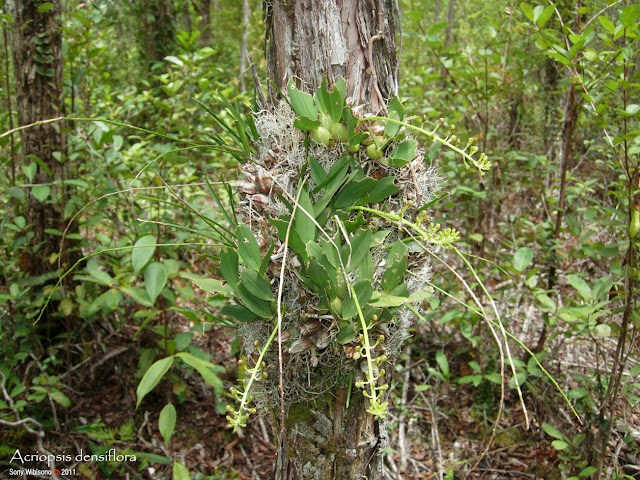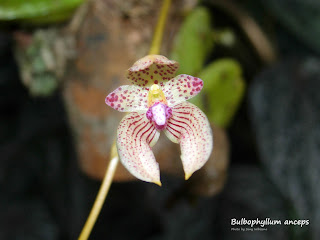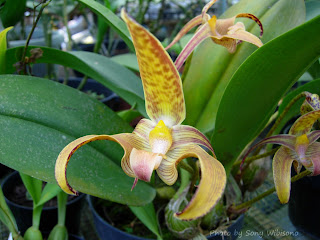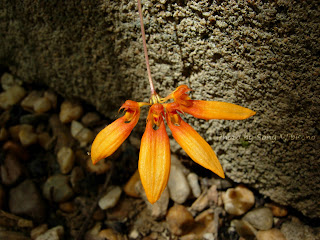Synonyms: Acriopsis borneensis Ridl. 1905; Acriopsis purpurea Ridl. 1893.
Can be found in Borneo and Sumatra, attached to tree trunks.
One characteristic of this species is, the shape of its leaves are short and wide, unlike most other Acriopsis species that tend to elongate.
Flower: 1,4cm broad, yellow with purplish brown spots.
In my place known as "Onion Orchids". Perhaps because their pseudobulbs looks like onions.
Bahasa Indonesia:
Bisa ditemukan di pulau Kalimantan dan Sumatra, menempel pada batang pohon.
Salah satu ciri spesies ini adalah, bentuk daunnya yang pendek dan lebar, tidak seperti kebanyakan spesies Acriopsis lainnya yang cenderung memanjang.
Lingkar bunga 1,4cm, dengan warna dasar kuning dengan bintik-bintik coklat keunguan.
Ditempatku dikenal juga sebagai "Anggrek Bawang". Mungkin ini dikarenakan bentuk umbi semunya yang mirip dengan bawang.
 |
| Acriopsis densiflora in situ |



















